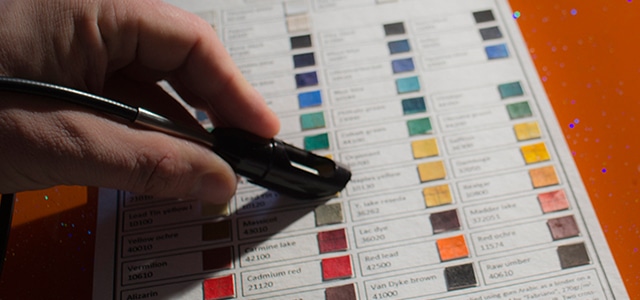
Just tested the low-cost mini spectrometer from BWTEK, Quest U (BRC112P-U). This is the most affordable of BWTEK series of mini spectrometers. It features a 2048 pixels linear array and covers the 200 -850 nm range. This test was done in collaboration with MADATEC, an Italian company supplying scientific imaging and analytical equipment also for art conservation sector . CHSOS already tested an ultraviolet lamp based on high power UV LEDs developed by MADATEC.
CHSOS welcomes companies to collaborate to evaluate their instruments for the specific tasks of art examination. MADATEC assembled this FORS system (Fiber Optics Reflectance Spectroscopy) : the Quest U mini spectrometer was coupled with a fiber optical reflectance probe including seven 200 microns fibers and a tungsten light source.

This FORS system was tested on the pigments checker laid with egg tempera, a collection of 54 historical pigments. The results are compared with the online FORS database of historical pigments published on e-conservation Journal.
The tested system delivers spectra (red curves in the following images) comparable to those of the online database. We are comparing them with the spectra of the swatches laid with gum arabic since they were acquired with a similar probe.
These examples show that the Quest U is a valid spectrometer for reflectance spectroscopy of pigments. The exposure time was 30 ms with 10 averages and boxcar 5.










